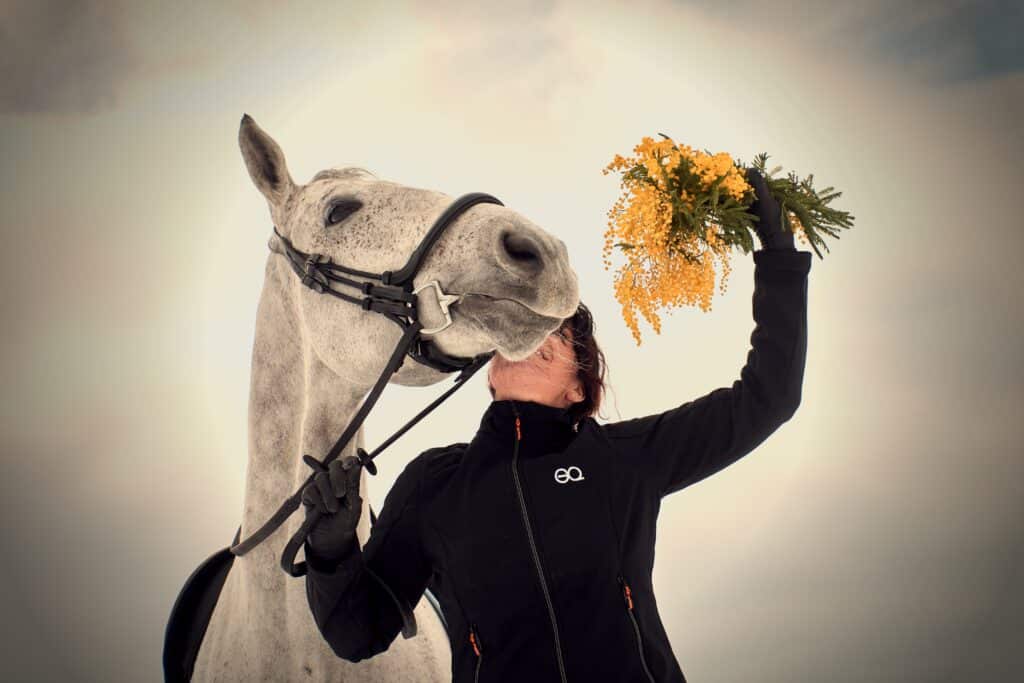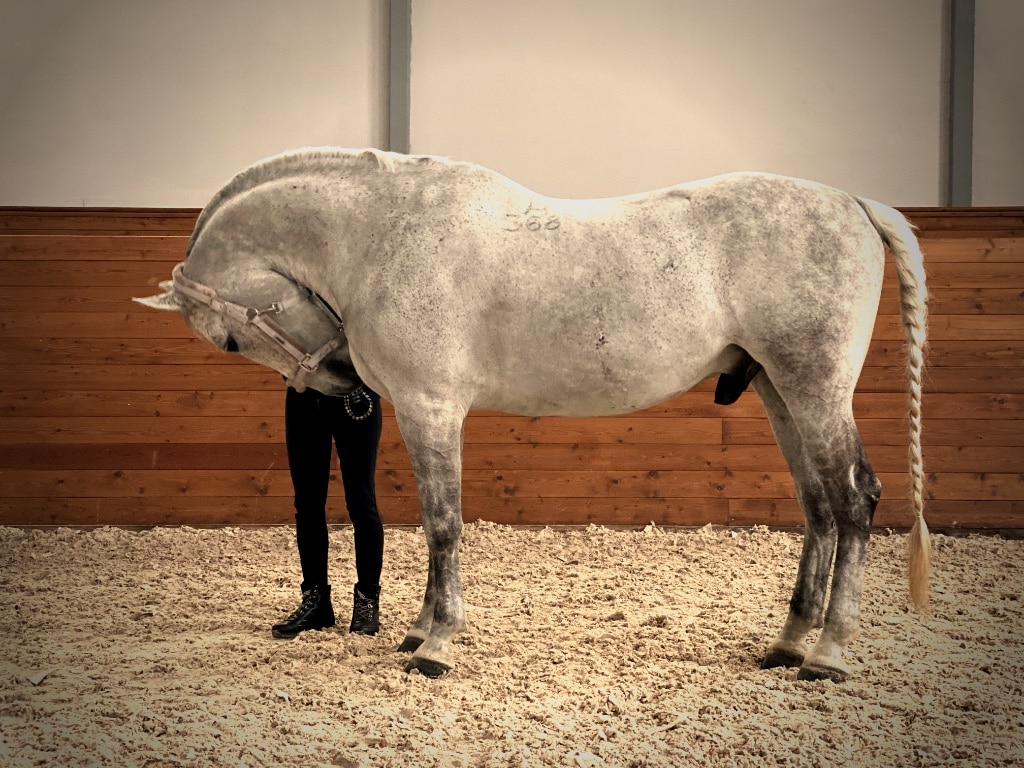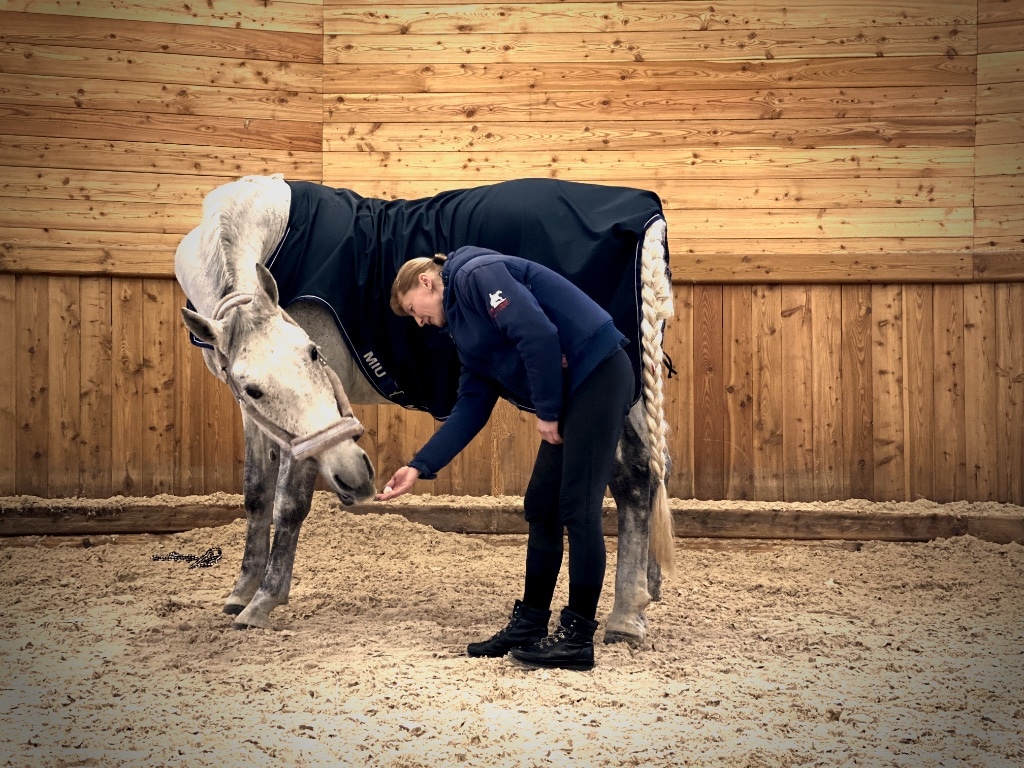Keeping your horse going smoothly and flexibly is super important for his health. As a rider, we still hinder our horse’s freedom of movement, but by stretching regularly we can get his muscles back in balance. This improves coordination, blood circulation and reduces muscle tension and stiffness. This allows him to move optimally and freely, which also benefits you while riding! Think of it as yoga for your horse and a nice change in your training. With these 5 horse stretches you can turn your four-legged friend into a real athlete!
Before you do the horse stretches
Before you get started with these stretching exercises, it is good to check whether your horse is ready and has no blockages. Don’t worry, we don’t want to scare you. We just want to tell you that you have to be sure that your four-legged friend can handle the exercises so that you don’t overextend his muscles. Warming up beforehand can also help. Measure your training with the SaddleClip to monitor your horse. Then you know where your horse stands and you can keep an eye on its progress!
Stretch exercise 1: Leg stretches
You’re stretching your horse’s legs while you are training. But hand exercises with your horse are very effective too and give a different stretch. Also with yourself 😉
How to do:
- Place your horse as square as possible. In this way, he distributes his weight and maintains his balance during the exercise.
- Grab his front leg forward and always start low with his hoof towards the ground. Is his leg fully extended? Hold for a moment and then carefully go up. Hold back for a while and don’t push too far if it is difficult for him .
- Feel where his limit is. When he pulls back, give in or let go. Then you start again, until he relaxes again and allows the stretch.
- Perform the exercise on the other front leg as well. And then stretch his back legs.
In this active exercise you do the stretch for him. Of course, trust is needed to allow this. Is he a bit restless? Make small circular movements with the leg so that he relaxes more. Stretching the legs is good for blood circulation and makes the hindquarters stronger. This ensures a better balance, which is also good for better symmetry. Want to know what the exercises do? Measure symmetry in musculature as well as equal strength and coordination in the hind legs with an equine training app.
Stretch exercise 2: Chin to chest
With this exercise you train the front and middle part of the neck muscles. Your horse makes this stretching movement himself. Invite him with a carrot, treat or something else he likes.
This is how you do it:
- Stand next to his shoulder with your face toward his head.
- Hold the treat in front of his chest, inviting him to bend his chin toward his chest. Hold this position for a few seconds and then relax. Make sure he doesn’t lean onto his neck and avoid the exercise.
- Does he move more smoothly? Then you can ask him to bring his chin closer to his chest. Or have him bring his chin more toward the bottom of his chest or toward the floor. This way you stimulate the flexion in the upper and middle part of the neck. Hold the exercises for a few seconds. The key is small increments and seeing where your horse wants and can bend in a natural way.
- Give him the treat as a reward 🙂
While riding, most horses walk a lot in the bridle. With this exercise you not only vary in intensity, but also with different kinds of training.
Stretch exercise 3: Combined neck-abdomen-back stretch
In this exercise, we’ll combine two stretches to get his back extended completely.
Giraffe neck
“Did you know that in nature a horse eats the leaves of high tree branches? With this stretch you imitate this posture.”
- Stand on a stool and hold a treat as high above his head as possible. Let him take it slowly and try to keep him in this position for about five seconds. Make sure he keeps his head straight in front of his body.
- Variety is nice: hold the candy slightly to the left or to the right.
- For a complete stretch, ask your horse to bring his neck forward as far as possible while keeping his head at chest level. Leave him in the same spot.
In this exercise you bring the lower line of the body to length. You stretch his neck, lower neck, abdominal and chest muscles with this. You also stimulate his trunk stability.
Tip: Hang a snack as high as possible in your horse’s stable. Then it stretches by itself while nibbling and gnawing. Immediately, he gets a treat that rewards him.
Bend between front legs
Then do the Giraffe’s neck opposite:
- Let him bend his head midway between both front legs.
- With a carrot, challenge it to go as low to the ground and stretch as far back as possible.
- Hold this ‘sit-up’ for a moment. Let your horse come back up slowly and repeat this a few times.
This exercise flexes the withers and strengthens their abs, back flexibility and topline muscling is important. The reversed stretch provides extra balance in his body.
Stretch exercise 4: Low to the side to the hock joint
Ready for a more intensive exercise? With a bend down towards the hock, you train your horse’s abs, stretch his outside ribcage and make him more flexible with bending.
Here’s how to perform this stretch:
- Ask your horse to bend its neck in the direction and height of the hock joint. Note: He is not supposed to touch his hock.
- He may stay far from his body with his head. That’s totally okay, see how far he can go. Does he step or lift a leg? That is a sign that he is having difficulty with this exercise and is going to compensate. Then don’t force him.
- Do this exercise on both sides. Vary by bending him low to the side towards his forefoot. Then you mainly grab the long back muscle.
You also strengthen the trunk stability and make the overall spine more flexible. Another benefit is stimulation of the psoas group. This gives organs space and allows them to function better.
Stretch exercise 5: Walking backwards by hand
Going backwards is important and many people forget this when exercising. Maybe you simply don’t think about it, or your training buddy doesn’t quite understand what the intention is? Then this stretch next to him is a great exercise.
Here we go:
- Have your horse walk forward with the hand and then have him actively halt.
- Encourage him to step back by applying light pressure to his chest and shoulder joint. Does your horse know the exercise? Then less or no pressure is needed.
- Keep his head as low as possible to raise the back. Start with a few strides and gradually increase up to 10 strides at a time.
When you train your horse while mounted, it will now be easier because you worked from the ground first. This way he learns to bear the weight on the hindquarters better. The purpose of this stretch is to lift and bend the back, strengthen the hindquarters and relax the SI joint (the connection between the sacrum and the pelvis).
Stretch with exercises as far as your horse can
Keep your horse in mind during all exercises and make sure that you do not force anything. He has to do it himself. Do the exercises slowly. Does he have some trouble at first? Build up the training slowly and don’t overdo it. By doing it more often, you can stretch further little by little. As a yoga rookie you don’t immediately put your leg to your neck 😉 But also remember: not all horses are equally flexible. Be content with what he can do.
With these stretches your horse becomes even more flexible and more symmetrical, so that he is (again) nicely in balance. Do you want to know if you are on the right track to make your horse more flexible? Start training based on data and view the difference in the app. With the SaddleClip you can measure and analyze every movement of your four-legged friend. This is how you turn your horse into a ‘Happy Athlete’!
Would you like to know more about training with data? Read how you can improve your training with the Equestic training sensor.










